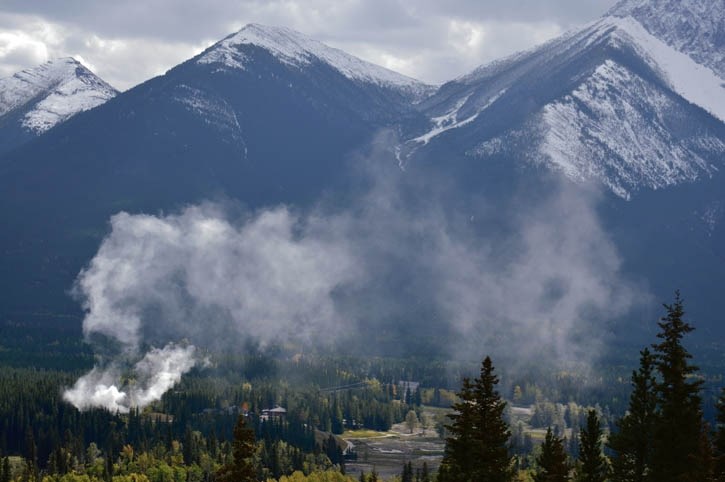A large mock wildfire exercise took place in Kananaskis Country last week as wildfire management crews look to fire up improvements to current emergency plans.
The Southwind Mock-Wildfire Exercise simulated a wildlife that engulfed 650 hectares in the Evan-Thomas Provincial Recreation Area in a sea of flames on Sept. 16-17.
The exercise involved multiple agencies, including Kananaskis Emergency Services, Alberta Agriculture and Forestry, Calgary Wildfire Management Area and the RCMP.
It was treated as a real life crisis with simulated evacuations, said Craig Halifax, chief of emergency services for the Kananaskis Improvement District, with a main priority to work with all partnering agencies that would assist in a large wildfire event in the area.
The exercise was planned for earlier this summer, but was scaled back a bit until this past week due in part to the blazes this summer that wreaked havoc in Alberta and B.C. However, the two-day event helped emergency response agencies gain valuable information.
“(About five years ago) we developed a plan specifically for a large wildfire event in this specific area and we were planning to update it by the end of this year, so we’re utilizing this exercise to test the old plan and see where we can make improvements on it,” Halifax said.
Weather conditions for the mock wildfire were adapted from a hot and dry September day about 15 years ago in the valley to add to the realistic factor.
As simulated smoke spouted up from timbered areas every hour, emergency personnel and vehicle crews began a large-scale evacuation as hovering helicopters dropped water bombs on the mock area as it raged north from Wedge Pond past Kananaskis Golf Course and Delta Lodge and to Ribbon Creeks.
Every hour, the crisis headquarters at the edge of the Delta Lodge rec field, posted an updated version of the expanding wildfire. There, it was penciled in what areas had been evacuated and where the crisis area had spread.
As part of the exercise, crews advised local residents of the mock event by going door to door to speak and leave fliers, which also simulated in real time if they had to do it in an emergency situation.
“Right now the evacuation we’re doing is more focused on the residents, although we know that on a weekend in the summer we’re going to have five, eight, 10,000 more people throughout Kananaskis that might need that evacuation assistance,” Halifax said.
A meeting following the exercise with the agencies was held to discuss the overview of the event and to see what improvements can be made from the command level to ground personnel.
“A big piece is always communications when you have so many agencies coordinating together,” Halifax said. “It’s how do we talk to each other, and to be honest, it’s gone quite well so far as far as the exercise is concerned, but we have noted that there are improvements that can be done.”
The last major wildfire event in the area occurred nearly 85 years ago, and retired prevention officer for Agriculture and Forestry Rick Arthur spoke to how quickly it spread.
“In 1936, a very dry year, in early August, a lightning fire started up Galatea Creek and spread out towards Fortress. The next day it made a run and came straight up the valley and burned all the slopes of Mount Kidd, down across Mount Allen and right up to Skogan Peak, also burning on the other side of the valley – roughly 8,000 hectares,” Arthur said. “When it made that run it burned that area in about eight hours.”
Arthur says the fact a major fire hasn’t occurred since is a good and bad thing all in one.
“It’s a huge buildup of fuels as some areas are becoming more so flammable because of age,” Arthur said. “There are more values at risk now than historically ever was.”
A planned prescribed burn in the Spray Lakes Valley this year was called off due to bone-dry weather conditions and wildfire prevention officers’ commitment to subduing blazes in the north.
“All prescribed burn and hazard reduction activities revolve around weather conditions and resource availability,” said Kevin Topolnicki, wildfire prevention officer for Agriculture and Forestry, in an email.
“Plans are to work with the Morley fire department this fall into the winter months to complete hazard reduction burns on the reserve and planning will continue for possible operations in the Evan-Thomas Valley next spring and summer.”




